Solving the Griddle Riddle
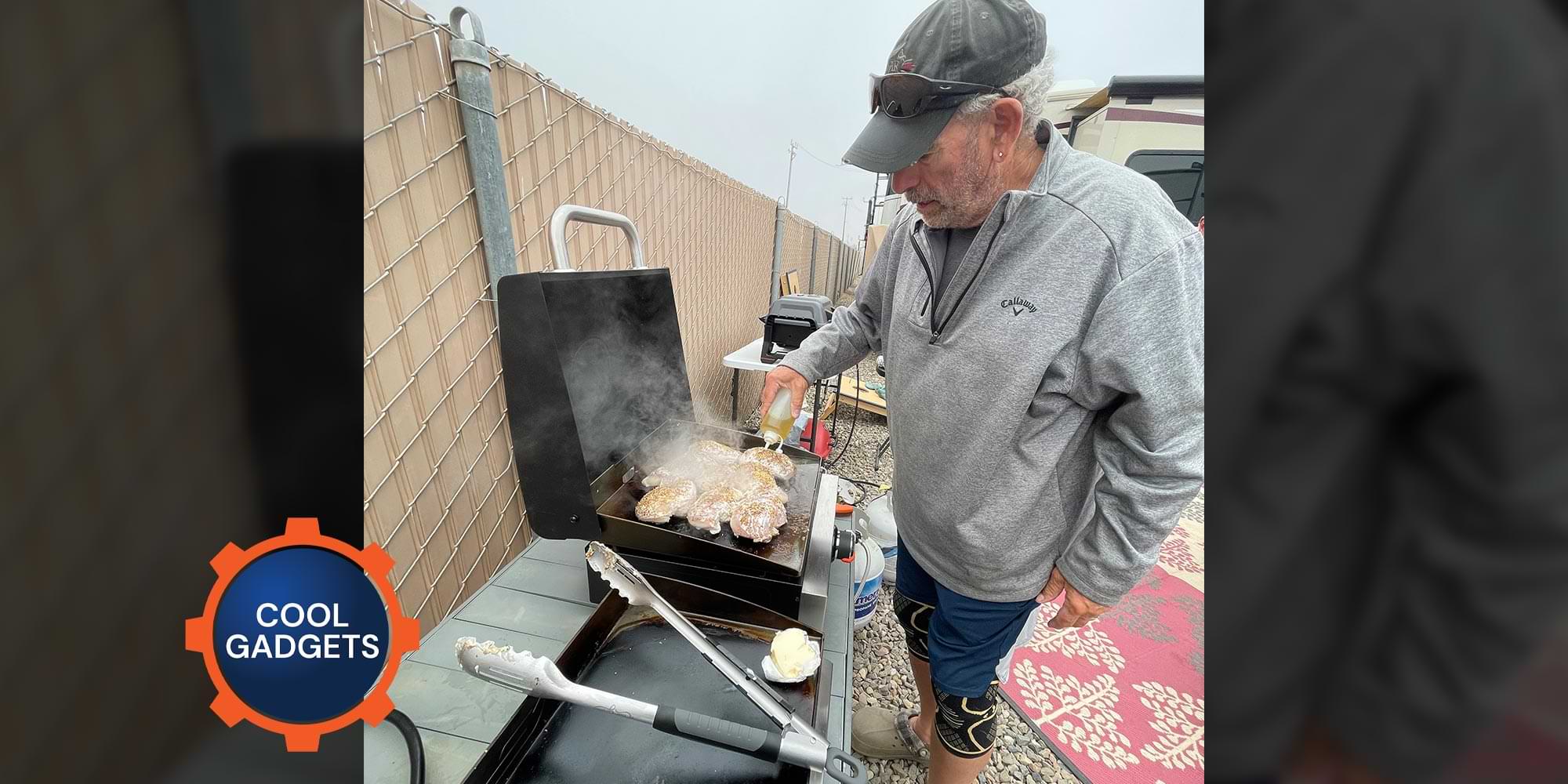
Grilling food outdoors has become a national pastime of sorts. Portable barbecues can be found in virtually every RV site these days. But a new trend in grilling meats — and just about anything else that needs cooking — on a stout steel griddle is growing at a feverishly fast rate and Blackstone is becoming a household name among RV outdoor cooking aficionados.
I have a two-burner Blackstone griddle at my winter digs in Palm Springs, California, and bought into a single-burner model with friends who my wife, Lynne, I travel with frequently. A steel griddle has become our go-to cooking surface, but it’s heavy and bulky so our friends have been relegated to carry the recently purchased 17-inch Blackstone griddle in their fifth wheel, which has extra storage space. When we travel separately, though, we have no access to the griddle.
We really missed it — before the proverbial “thought” light bulb started blazing.
The idea — developed after reminiscing about how we cooked on a cast-iron pan over an open flame during our more rustic camping days — led to the acquisition of a classic 10.25-inch Lodge cast-iron skillet at Walmart for $20. Cast-iron skillets have been around since the 1800s and are basically griddles in a cooking-pan disguise. While the cast-iron skillet has been romanticized by outdoor chefs who like to rough it, current manufacturing practices — to include skillets made by Lodge — offer pre-seasoning for a more natural nonstick surface without taking away from the inherent benefits of cooking on cast iron. These skillets cook hotter and evenly. Plus, burned food can be easily scraped away and the skillet washed by hand (or just wiped out) and coated with a thin layer of your favorite cooking oil.
If “how it was done in the old days” is not your forte, there are high-end cast-iron skillets offered by cookware suppliers that can cost more than $200. We like the more traditional look, and for 20 bucks the cooking process is virtually the same as cooking on a high-zoot version. Besides, banging it around outside doesn’t cause undue consternation. Most people have these skillets for life.
Although the Lodge cast-iron skillet is tough enough to cook over an open flame, we prefer using an induction cooktop, which is cleaner and can be set up in minutes on a picnic bench or portable table. And, since a magnet will “stick” to the bottom of the skillet, it meets the requirement for use on an induction cooktop. The only caveat: 120-volt AC power is needed. Primitive camping environments preclude its use unless your RV has at least a 2,000-watt inverter supported by a decent battery bank and solar recharging (or you’re willing to run a generator).


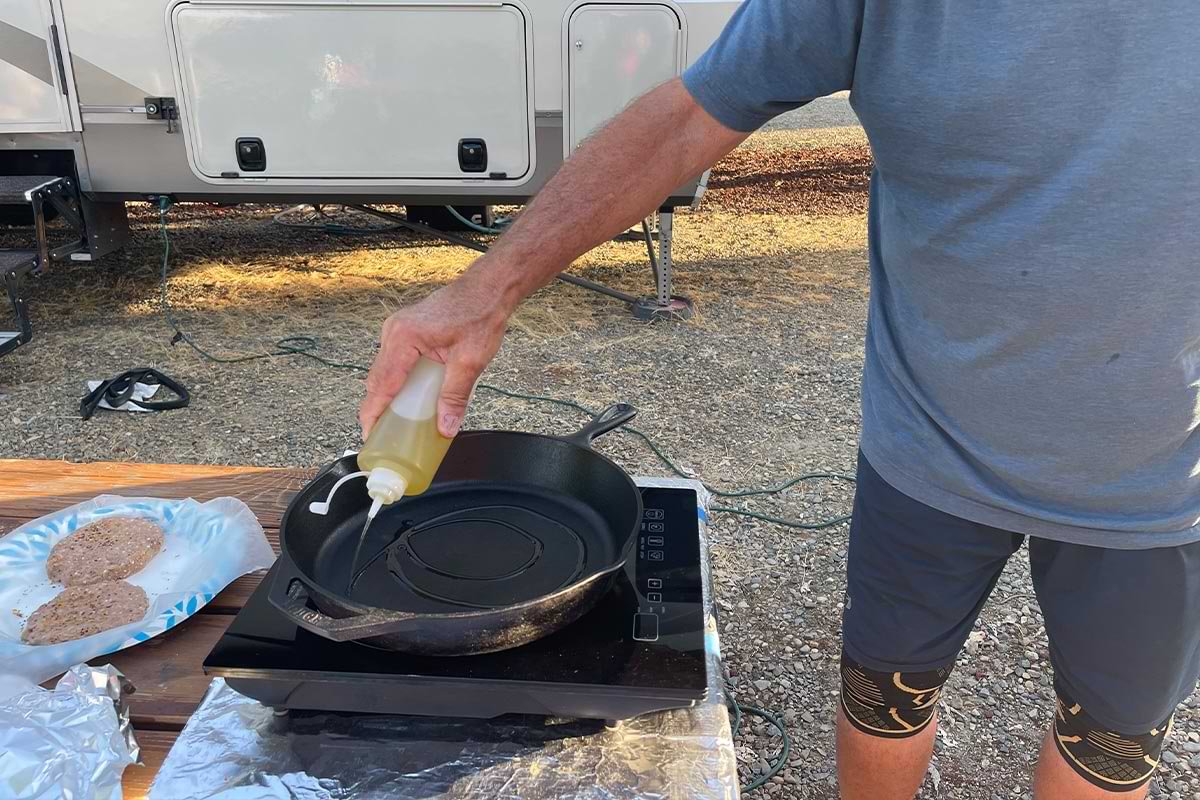
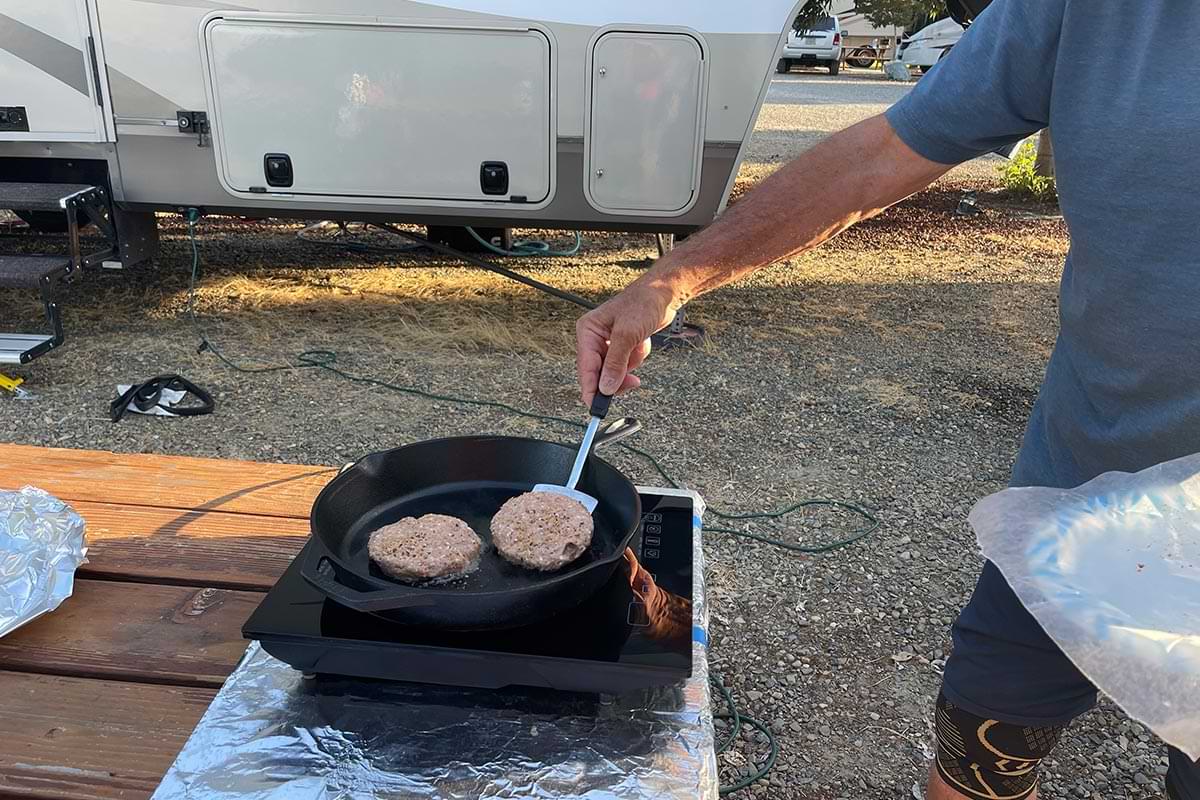
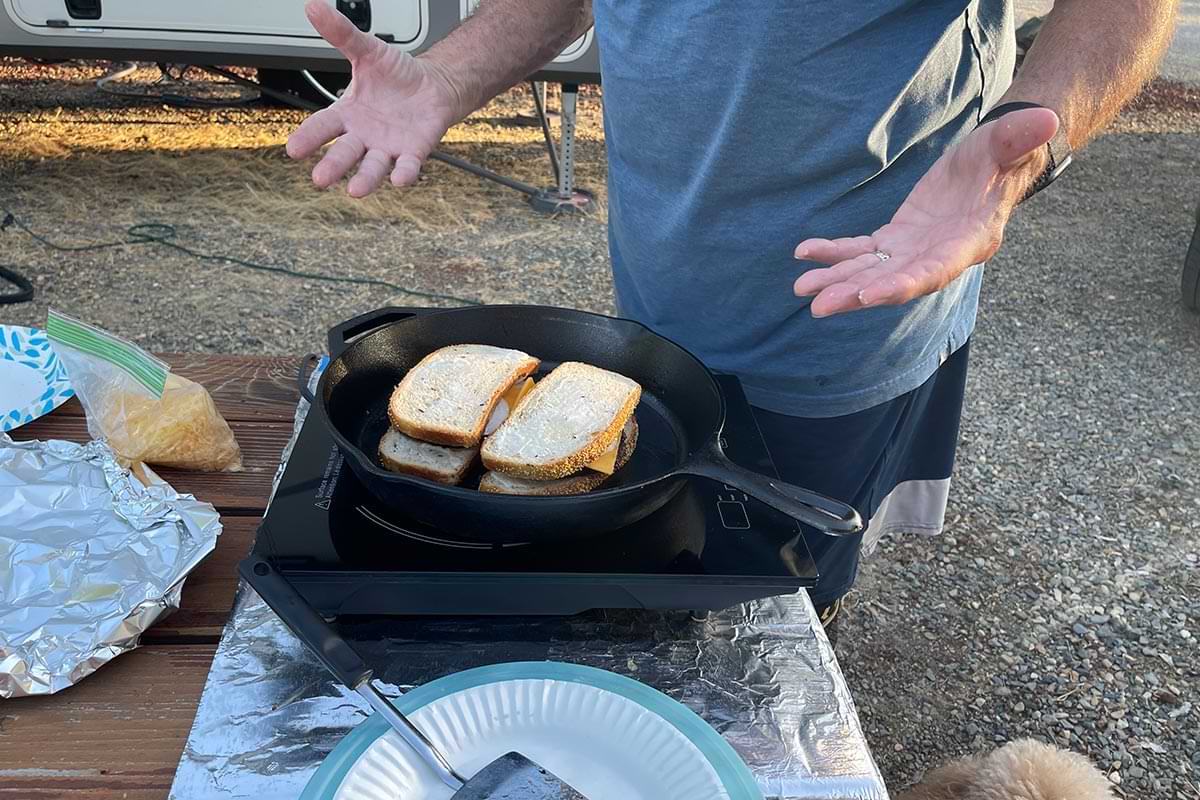
We had a hankering for patty melts one night, which fit nicely in the skillet. It takes some time to figure out the right temperature to prevent burning. Many “chefs” tend to use too much oil to compensate for excessive heat. It doesn’t work that way; all you get is overly saturated, greasy food. Keep the cooktop temperature low (except when frying) and monitor the food throughout the process. The induction cooktop can really get hot.

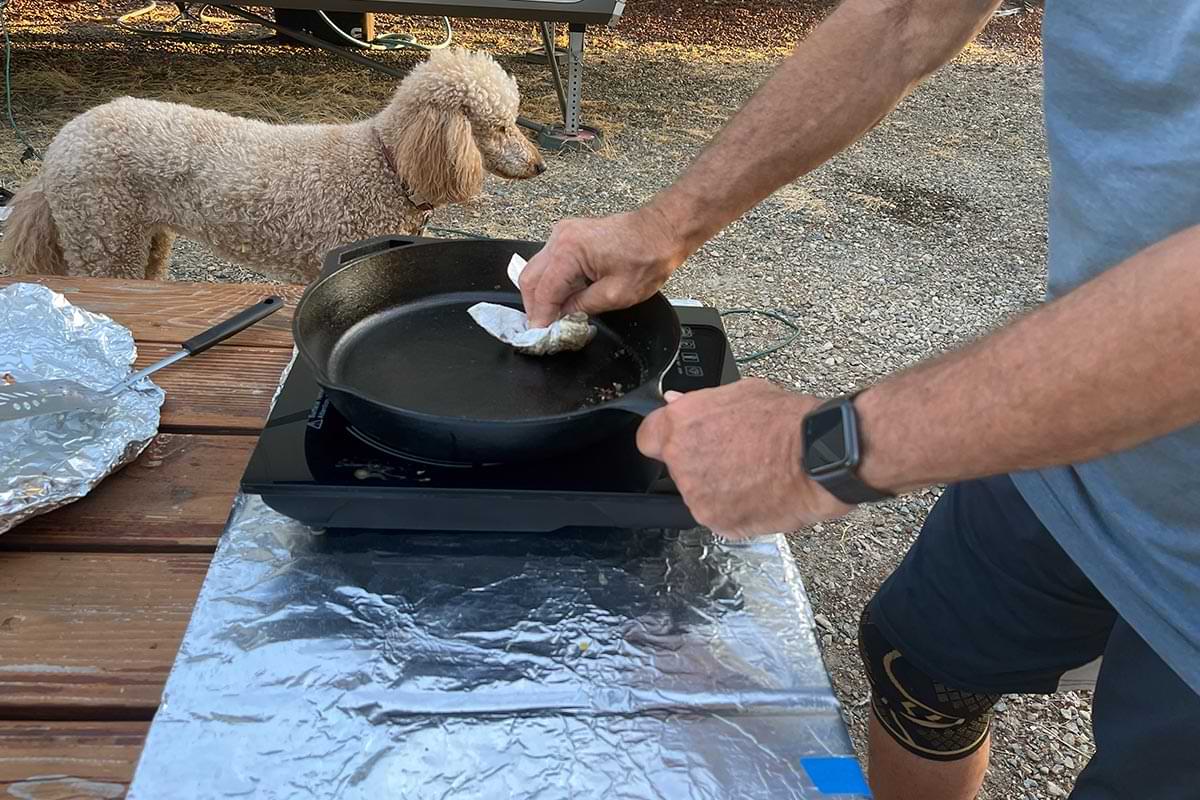
When you’re done, simply scrape off any burned-on food and wipe out the skillet. It may be necessary to hand wash with soap and water, but traditionalists refrain from that process if the surface can be wiped clean properly. Once clean, coat the surface with thin layer of cooking oil and store the skillet. This skillet fits perfectly under our stacking pots and pans.
Obviously, the cast-iron skillet has a much smaller cooking surface, but we’ve managed to fry fish for 10 people (in shifts) and it’s perfect for the two of us and two guests. As a courtesy to the RV park, aluminum foil is used to protect the top surface of the picnic bench and prevent making a mess, especially when frying foods. Aluminum foil can also serve as a lid, which helps control the heat, or a more formal lid designed for the Lodge skillet ($25) can be purchased online; for storage and weight considerations, the foil is our preferred method.
Granted, some will undoubtedly ask, “Why can’t you simply place the Lodge cast-iron skillet on the cooktop burner inside the RV?” You can — but you’ll have to deal with splattering food and oil. RVers love to cook outdoors, anyway, and doing so will keep the splatters and smell outside. My makeshift griddle is not a perfect substitute for the Blackstone but it does work better than expected — although it’s not as sexy as hovering around an expansive griddle armed with shiny spatula and tongs, pretending to be the best chef in the RV park.
Already a Subscriber? Click here for Access to the Full Issues.


